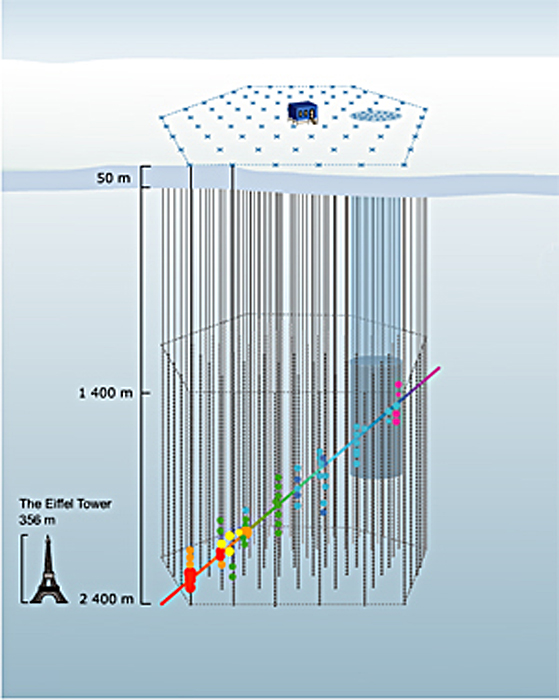
Play a little game with me, if you have the bandwidth (both in terms of time and in terms of connection speed). Take a look at a QuickTime of the concept referenced by the image above. (Actually, it’s only about 3 MB, so you don’t even need much in the way of connection speed.) As you’re watching it, see if you can figure out what’s going on.
The animation is quite clear. I followed most of the story without narration, but I didn’t quite catch the details, and without a narrative to support it, the excellent animation couldn’t carry all the weight of the narrative. This parallels the experience I had in testing animations created for one of the American Museum of Natural History fulldome programs: basically, without narration or subtitles, people don’t know what they’re looking at.
I couldn’t find the press release online, but here’s the description I received via email…
“This new class of objects was discovered using the European ‘INTErnational Gamma-Ray Astrophysics Laboratory’ (INTEGRAL) satellite. Twenty of these binary systems were found, with estimated distances lying between 7,000 and 25,000 light years from Earth, putting them all inside of our own Milky Way Galaxy. The nature of these sources was revealed through multi-wavelength observations, mainly from optical to mid-infrared (MIR) wavelengths, using European Southern Observatory (ESO) facilities.
“Scientists have found that most of these sources are made up of a compact object orbiting a supergiant star, an enormous star with 30 times the Sun’s mass and 20 times its diameter. Stars like this eject a huge amount of cold gas and/or dust at a rate equivalent to emitting the mass of our Sun in just 100,000 years. This type of object is called a High Mass X-ray Binary System (HMXB) and in most cases the compact object is a neutron star, an object of about 1.4 solar masses concentrated in a radius of only 10 kilometers (6.2 miles). Normally, an object like this would be an intense source of X-rays as the tremendous gravity and magnetic fields of the neutron star interact with the dense gas and dust emitted from the more massive supergiant star. However, for this new class of objects the cocoon of cold gas and/or dust is so dense it absorbs most, but not quite all, of the high energy X-rays. Only multi-wavelength observations, from X-rays to infrared, were able to reveal the nature of such objects.
“These systems seem to divide into two classes, likely depending on the size and eccentricity (ellipticity) of the orbit of the neutron star around its companion. In the first class of objects, such as IGR J16318-4848, the neutron star orbits around the supergiant star along a roughly circular orbit, like the Earth does around the Sun. However, in this case, the orbit is far smaller: the distance from the neutron star to the supergiant is less than the distance of Mercury from the Sun-even though the supergiant star’s radius is 20 times bigger than that of the Sun.
“Since the cocoon of cold gas/dust totally blankets the whole system, the neutron star stays permanently inside this dense cocoon, so there is a persistent source of X-rays. But in the second class, such as IGR J17544-2619,the orbit is more eccentric, and the neutron star crosses only periodically into this dense cocoon of cold gas/dust covering the supergiant star, causing intermittent emission of X-rays during that time.”
Now watch the animation again. All the elements are there, and the whole thing makes sense now.
The results were presented at the first GLAST Symposium, currently underway not far from my present location. As an aside, I’ll note that I find it interesting that the fulldome planetarium show Black Holes: The Other Side of Infinity will be shown as part of the conference. Yay! Domes!



